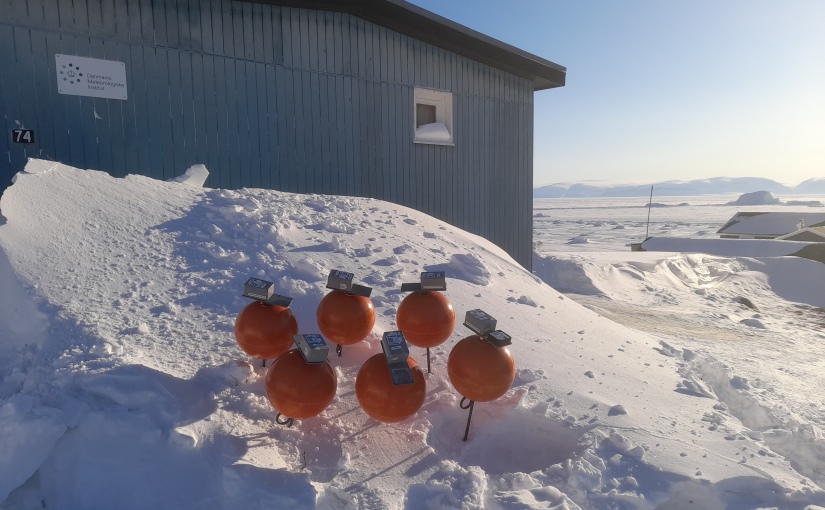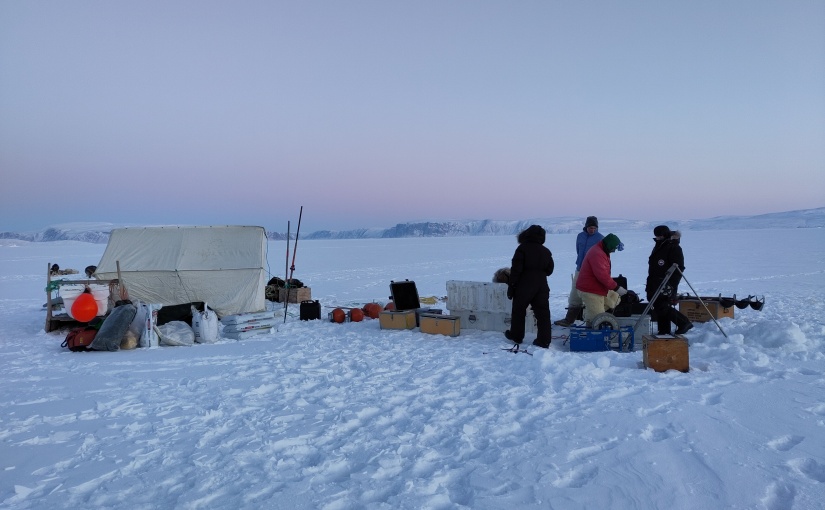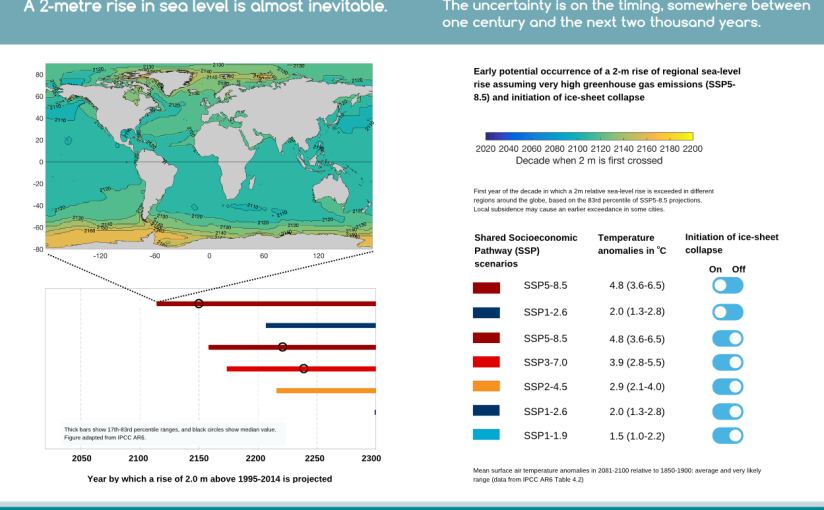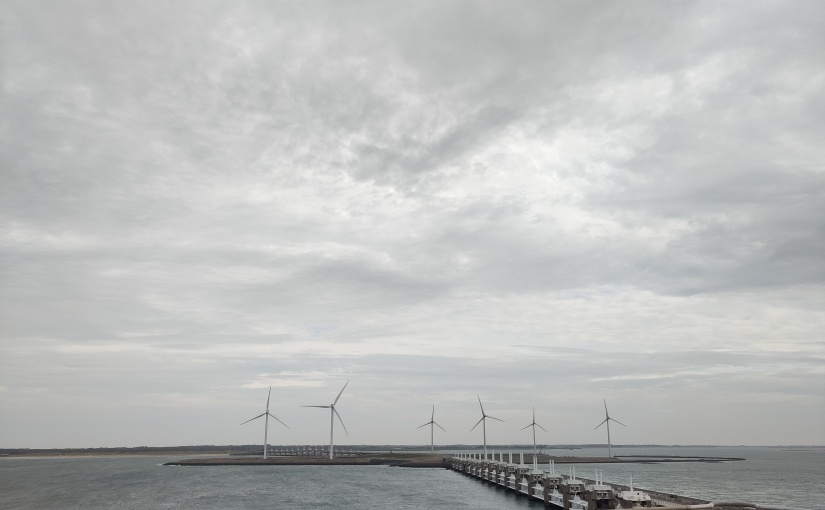Category: People
Building the Next Generation…
Hands-up who is looking for a new and very cool job in ice sheet and climate modelling and developing new machine learning tools?
REMINDER: 4 days left to apply for this PhD position with me at DMI looking at Antarctic Ice Sheet mass budget processes and developing new Machine Learning models and processes.
UPDATE 2: The PhD position on Antarctica is now live here. Deadline for Applications 18th February!
UPDATE: It’s not technically a PRECISE job, but if you’re a student in Copenhagen and are looking for a part-time study job (Note that this is a specific limited hours job-type for students in higher education in Dnmark) , DMI have got 2 positions open right now, at least one of which will be dedicated to very related work – namely working out how well climate and ice sheet models work when compared with satellite data. It’s part of a European Space Agency funded project that I and my ace colleague Shuting Yang, PI on the new TipESM project, are running. Apply. Apply. Apply…
I’ve written about the PRECISE project before, our new Novo Nordisk funded project looking at ice sheets and sea level rise.
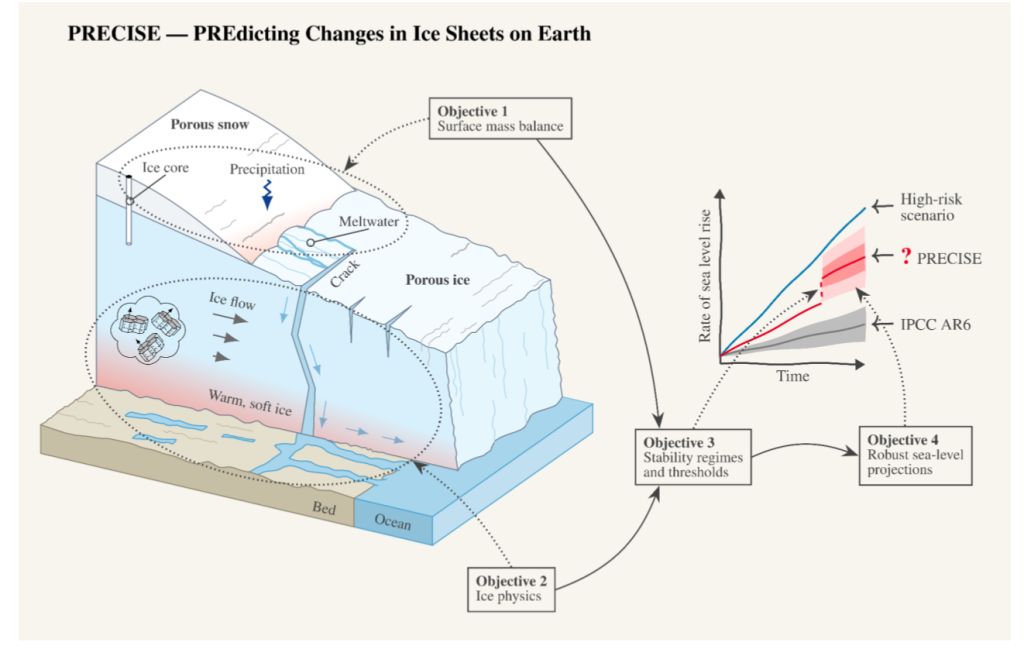
This is a quick post to announce that our recruitment drive is now open. We’re split across three institutes. We are two in Copenhagen, ourselves at DMI and the Niels Bohr Institute at the University of Copenhagen, and then the University of Northumbria in Newcastle, UK.
The PI at the Niels Bohr Institute is the supremely talented Professor Christine Hvidberg, aided by material scientist and head of the institute, Joachim Mathiesen. I am leading for DMI, and the Northumbria work is led by Professor Hilmar Gudmundsson. We are also very fortunate to have the talents of Aslak Grindsted, Helle Schmidt, Nicolas Rathmann and Nicolaj Hansen already on board.
The project is already very cohesive between institutes, we’ve been working together for some time already and know each other well.
We have a good budget for travel and exchanges between groups, workshops, symposia, summer schools and the like, but perhaps more importantly, all the positions are focused at the very cutting edge (apologies for the cliche) of climate and ice sheet modelling. We are developing not just existing models and new ways to parameterise physical processes, but we also want to focus on machine learning to incorporate new processes, speed-up the production of projections for sea level rise, not forgetting an active interface with the primary stakeholders who will need to use the outcomes of the project to prepare society for the coming changes.
There’s also a healthy fieldwork component (particularly in Greenland, I don’t rule out Antarctica either), and if you’re that way inclined, some ice core isotope work too. So, if you’re looking for a new direction, feel free to give me a shout. I’m happy to talk further.
Links to all the openings, will be updated as they come out, these are currently open and have deadlines at the end of January:
Newcastle: A three-year postdoctoral research position in machine learning emulators of ice-ocean processes
Newcastle: A two-year postdoctoral researcher (PDRA) position in subglacial modeling of the Antarctic Ice Sheet
Copenhagen (NBI) PhD Project in Greenland ice sheet climate and precipitation variability
Copenhagen (DMI) PhD Project in Antarctic ice sheet surface mass budget (also keep an eye here, where there are also some other interesting jobs announced)
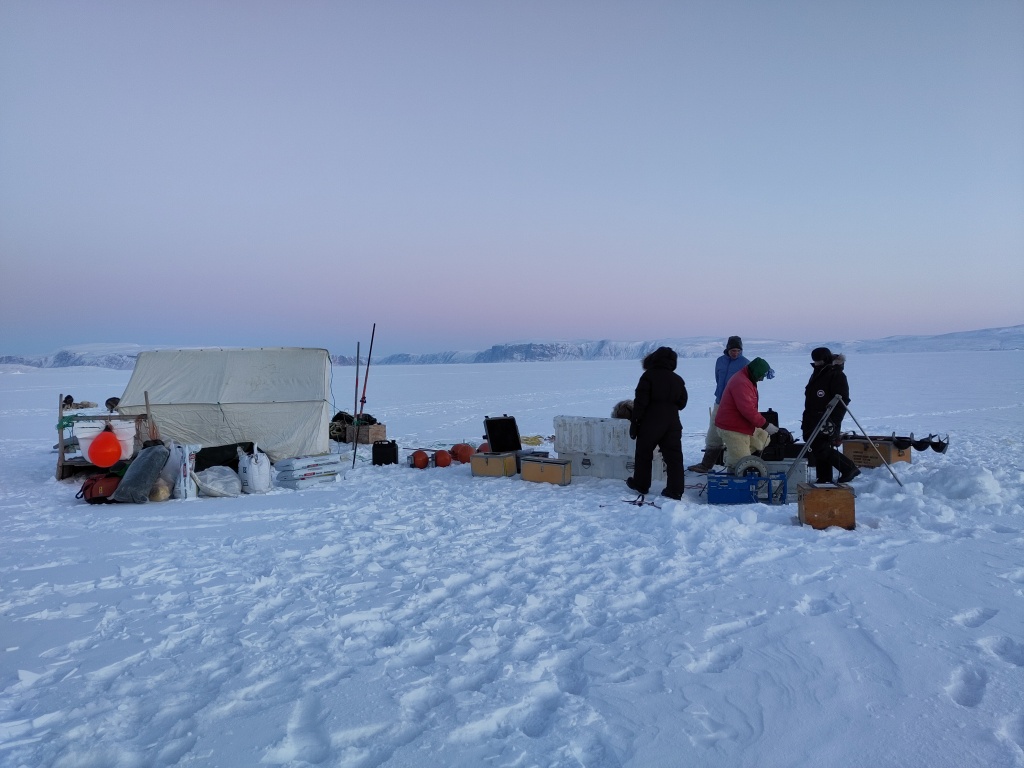
(Photo credit: Ruth Mottram, DMI)
A cryosphere call to action..
The International Cryosphere Climate Initiative has put together a new petition for scientists to sign. I’m a little sceptical that this kind of “clicktivism” makes much difference, but there are many many lobbyists from polluting industries at the COP28 and rather fewer scientists. And how else to draw attention to what is one of the most visible and urgent effects of climate change?
The petition is aimed at:
” all cryosphere scientists globally; as well as those working on emissions pathways: and those in the social sciences with research on adaptation, loss and damage and health impacts. This includes research and field associates, as well as doctoral students — because you are the future, and will be dealing with the impacts of climate change in the global cryosphere throughout your lives, as well as your professional careers.”
ICCI
The list of signatories so far already includes many rather senior scientists, so take this as a challenge to add your signature if you work in the cryosphere/climate space. It takes only a minute to sign and there are many familiar names on the list.
I’m not sure how else to emphasise the urgency of real action at COP 28.
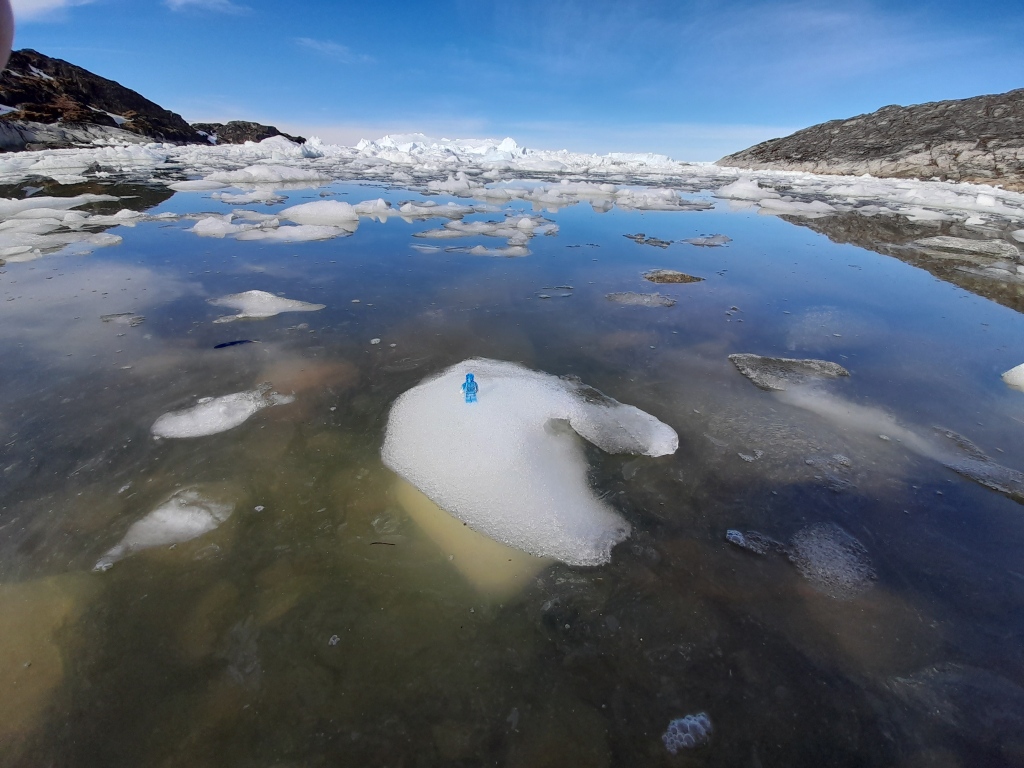
As a coincidence though, and as I posted on mastodon the image below appears in Momentum, a plug-in on my web browser with a new photo every day. Today’s is this beautiful image of the Marmolada glacier in Italy by Vicentiu Solomon.
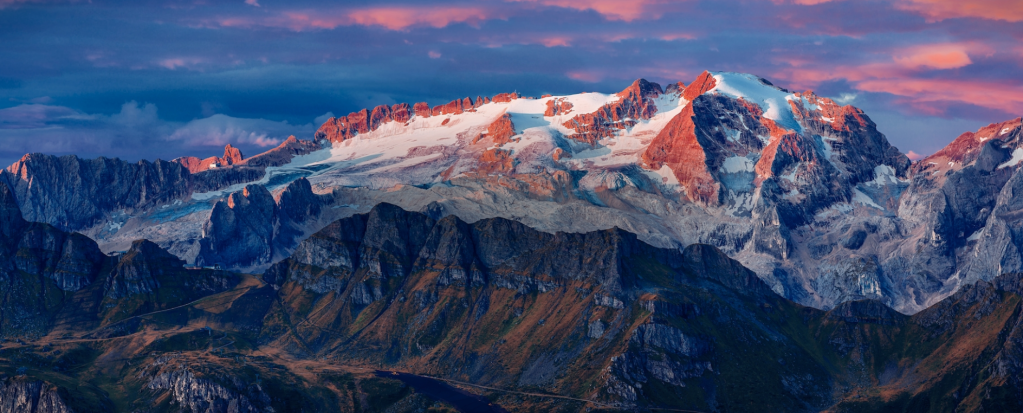
It’s a gorgeous but very sad picture – this is one of the faster disappearing #glaciers in the world and to hear more about the consequences of cryosphere loss, take a look at the policy brief produced by the PROTECT project on the sea level rise contributions from glaciers and ice sheets. It also contains this eye opening graphic:
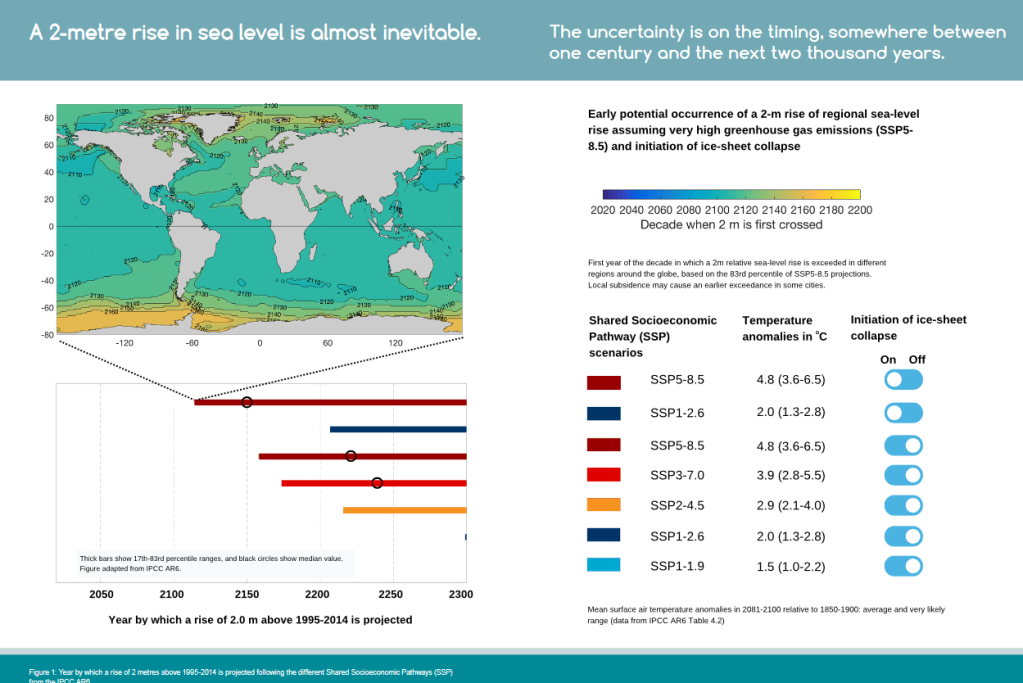
So there you have it. Here’s a reminder of the petition from the International Cryosphere Climate Initiative.
Flying less
If you follow me on mastodon you may have noticed a higher than normal number of posts, boosts and the like, many of them dealing with train travel in Europe.
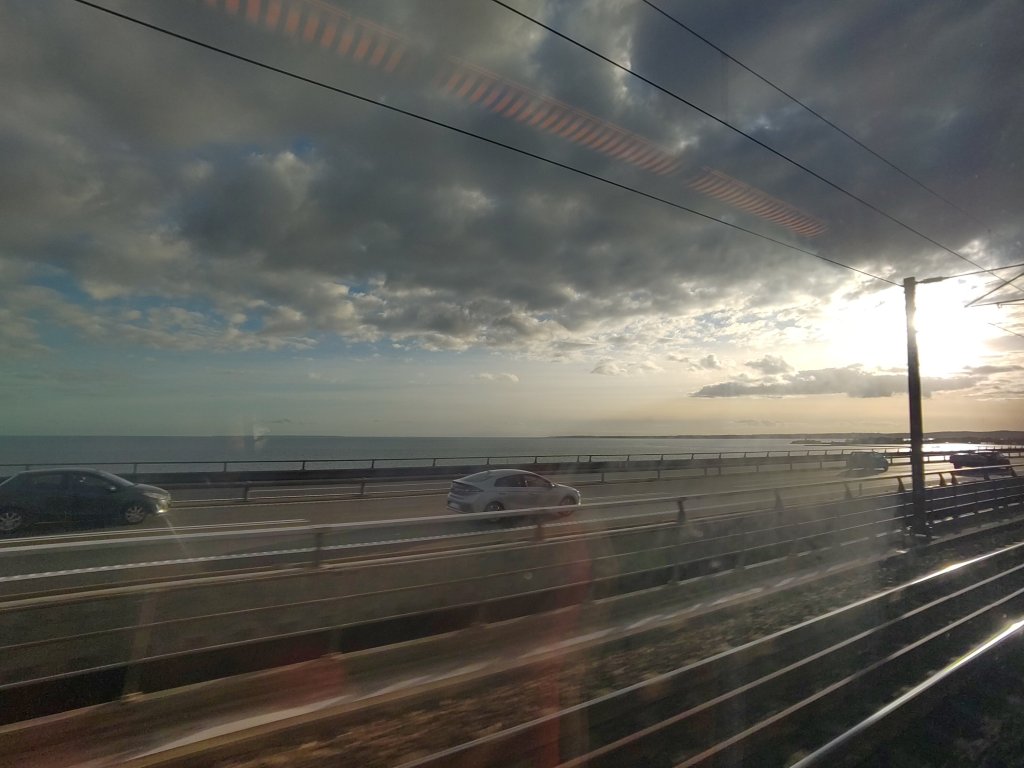
It is annual meeting season and that means the Horizon Europe projects I’m involved in (PolarRES, PROTECT, OCEAN:ICE) are gathering together somewhere more or less central (this year the Netherlands is popular) and discussing, presenting and planning with consortia members is going full speed ahead. After the pandemic when projects started online only or were written entirely via online meetings, even involving people who had never met each other, it’s clearly past time to come together in-person and discuss the newest findings.
I am involved in many different projects in varying roles (work package lead, project scientist, project coordinator). I find these meetings are incredibly stimulating and challenging. They help to get the scientific creativity going, to make new connections and meet new researchers, often early career scientists with new ideas and new techniques. Often this is an opportunity to see results that will not appear in the literature for months or years, as well as being an opportunity for planning new work.
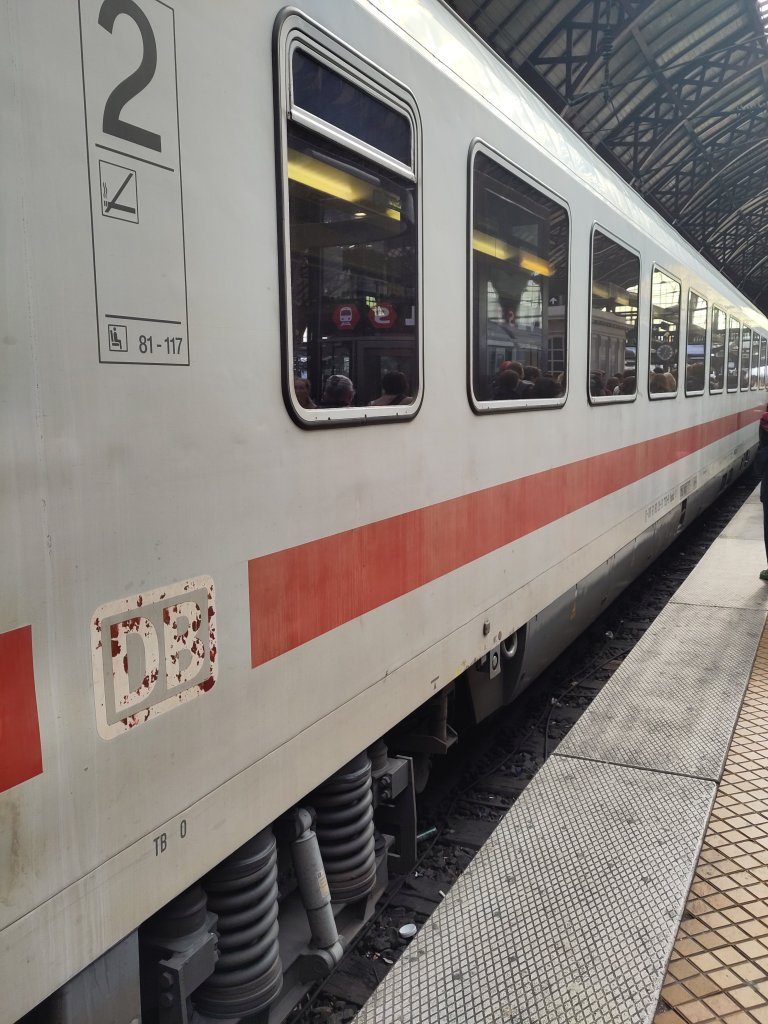
They’re also exhausting, often starting 8.30am and nominally finishing at 6pm but with many delegates in the same hotels and meeting over breakfast, not to mention late into the evening discussions over dinner, the days are long and non-stop.
I suspect it is much worse for those who do not have English as a first language. My Danish is fairly fluent these days, but I know how tiring it is to speak a foreign language all day. At the end all you want to do is crawl away to a dark room with no sensory stimulation at all..
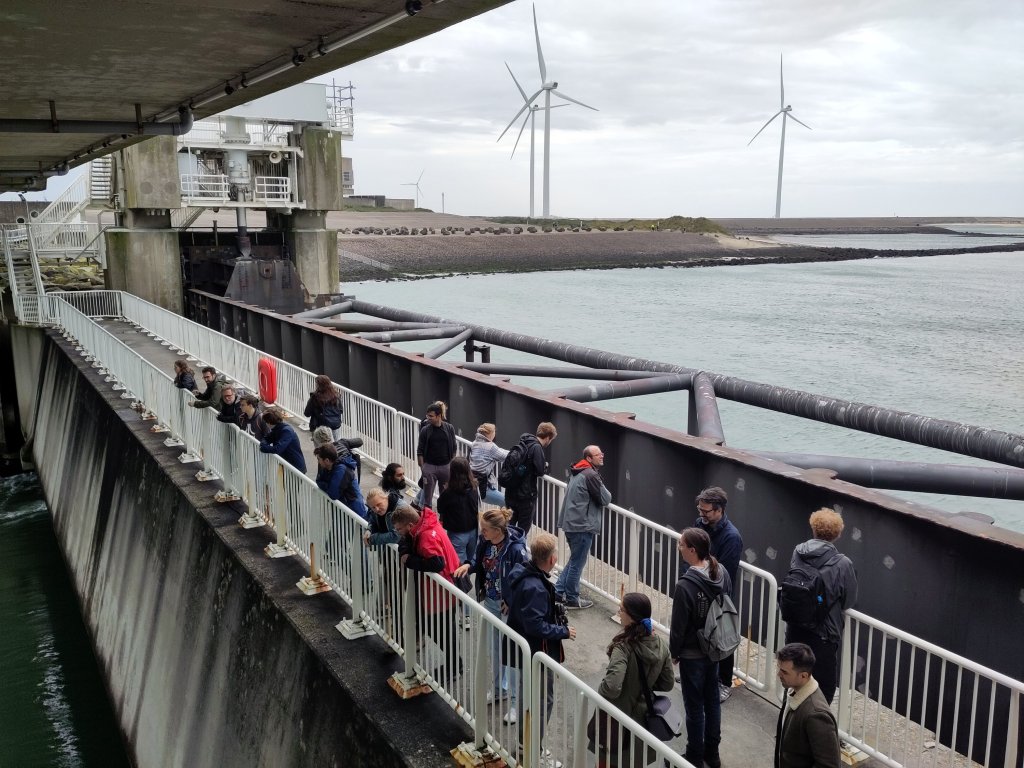
This year, as in other years, I’m trying to do as much travelling as possible by train. It’s actually a nice way to travel to meetings, with plenty of time and space to get work done while travelling.
Far more pleasant than flying, with more legroom, space to move about and without the ridiculous security queues. I use my time to prepare presentations for the meeting and reflect and follow up from them on the way home as well as to (try) to keep my inbox under control..
(I have notably failed at this task this year, but on the up side I’ve drafted or contributed to 3 different papers, which I think/hope will endure a bit longer than my emails.)
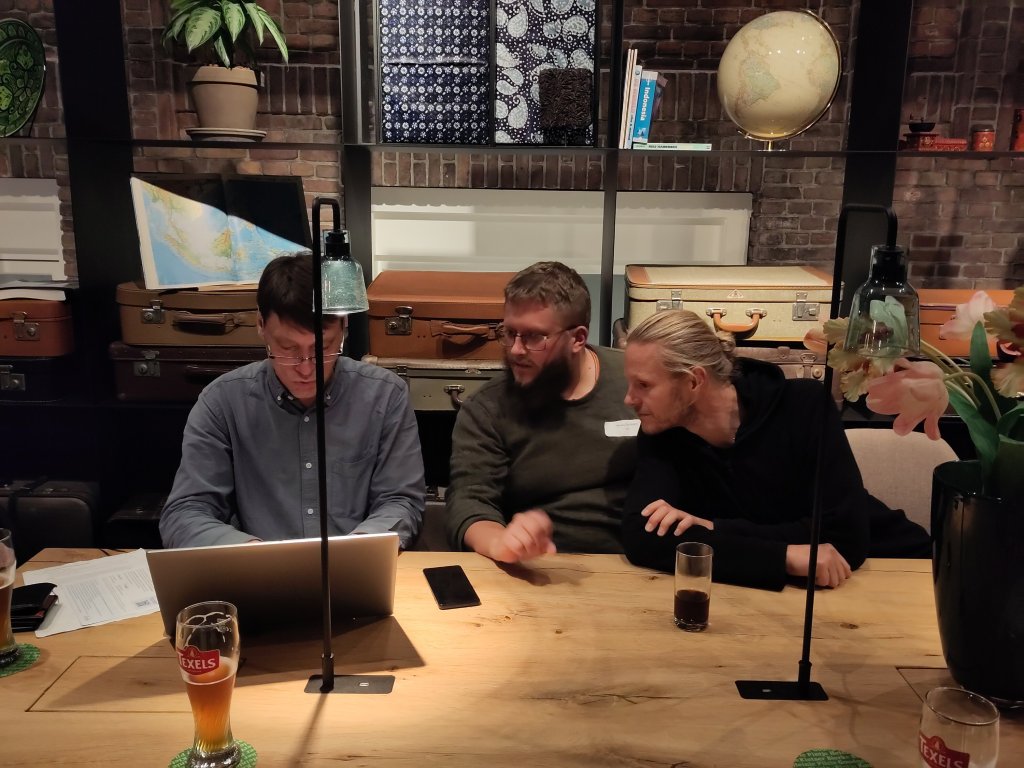
The Deutsche Bahn trains are particularly pleasant, especially the ICE including buffet cars, excellent food and nice spacious train seats with good WiFi. The TGV was by comparison a little disappointing in terms of comfort but a nice smooth ride. Let’s not get into a discussion on punctuality..

Train tickets can be surprisingly economical compared to flying, though usually the plane wins on money and time alone. My current trip from Copenhagen cost a mere 18 euros to get to Hamburg and the sleeper train connection to (near) Paris actually saves money as a berth turns out to be far less than the Paris hotel room I otherwise would have stayed in.
It is, however, aggravating how few sleeper connections there are between major European cities. Surely a connection to Brussels at least if not also Amsterdam makes sense? Props to the Austrian railways for keeping the sleepers alive at all in northern Europe.
There is a toll on family life from flying less. Although my family is growing more independent, the series of meetings have not made me popular at home, and probably rightly so. Travelling by train even to somewhere relatively close like the Netherlands or Paris easily adds a day either side. Letting the train take the strain turns out to also lead to strain on partners and children. In this I have to more than acknowledge my husband who is taking on far more than his fair share this month and who is also extremely supportive when it comes to the extra time.
I imagine not all employers are as tolerant of the extra day on either side travelling either, though as I said, it’s often quite productive, without meetings and office interruptions. Certainly, most of the other scientists have travelled by train from London, Vienna, Grenoble and even Kyiv.
A sleeper connection from city centre to centre would make all these links much more bearable from both points of view.
Even the few remaining sleepers leave only from Hamburg, not Copenhagen. That means a 4.5 hour (on a good day, it can be up to 6 hours on a slow train) each way connection to Copenhagen to factor in. Though, I should give an honourable mention to the Snälltaget, whose Stockholm- Copenhagen -Hamburg -Berlin service has been so popular it is now a year round service after being a temporary summer trial.
Don’t get me wrong, I quite like Hamburg, it is, if not charming, certainly culturally vibrant and a melting pot to rival London (let’s not forget it’s where the Beatles learnt their trade) and there is some excellent food and drink at the station. I’m practically at the Syrian mezze kitchen (seriously, check it out next time you’re passing through). However, it is also a gigantic bottleneck on the railway network and I’ve learned the hard way to allow at least an hour connection time and preferably more ..
Then there is the whole hassle of booking tickets and finding connections. Which is not to be underestimated. As a committed train traveller, I’m pretty good at it now, but it takes a lot of practice and as Jon Worth has eloquently pointed out, particularly when transferring internationally, some rail companies take a perverse delight in senseless connection times..
This is why I am a huge supporter of the Trains for Europe #CrossBorderRail initiative. If we want to reduce flying. And let’s be frank. We MUST, there is no way around it if we want to keep carbon out the atmosphere, then making it easy to replace planes with trains and buses (comfy, long distance ones and where possible electrified) is going to be essential.
And harmonising timetables, tickets and booking across Europe could be the kind of boring stuff that turns out to usher in a kind of quiet revolution in transport…
For now, I’m starting out on my last trip for a while, to Paris to meet OCEAN:ICE collaborators collaborators. Next year, after our historic hundred- year event storm flood last weekend , I will offer to host it in Copenhagen, so another group of cryosphere and ocean scientists can visit the frontline in the consequences of sea level rise.
I hope they will be able to take the train.

How (and why) to use Mastodon: a beginners guide.
Lessons from a year in the fediverse…
It’s been almost a year since I started to seriously explore Mastodon and the rest of the fediverse. I wrote a piece on here in December 2022 and again in February 2023 as I transferred pretty much all my activity to mastodon. There are other competitors to the dead bird site, and mastodon is not a complete replacement for the site formerly known as twitter, but it’s also very clear that in spite of recent improvements, it’s still quite hard for people to transfer. If at this point you want to skip ahead to the quick start go ahead, but indulge me a little justification first, there is a point, I promise…
EDIT: if you’re just here looking for good climate follows, the climate migration account at mastodon.world has put together this great list. Did you know you can import .CSV formatted files of accounts on mastodon?
As to why you should transfer or at least consider diversifying to different platforms? Well, we all have our own thresholds, but the increasingly appalling behaviour of the new owner means I certainly do not regret my decision to switch last year. I did not and do not want to have my “content” making X or whatever you call it now money either. If you wouldn’t buy a newspaper given outrageous racism and circulation of misinformation, then it’s probably worth asking yourself if there’s any difference posting to a social media site that has been proven to be a haven for trolls and one of the most active ways that misinformation spreads.
So where then? Well it’s a fractured social media environment today and as I wrote before, I’ve ended up blogging a lot more. And it’s been fun. I’ve really enjoyed restarting this effort.
I have been offered a couple of BlueSky invites, and I may check it out, but it will never be an “only” because that would suggest we have learnt nothing from handing over control of our digital lives to yet another VC funded start-up. If their promises of interoperability come good, I may review this opinion. I might start to share these wordpress posts over at Substack too – though there also the ownership gives me pause, I will certainly not allow it to be come the one platform to rule them all.
This excellent post by Elizabeth Tai put it much better than I can. And at least with Mastodon I have much more control and ownership over my own content and my own data – nobody is trying to monetise me.
“The Twitter meltdown made me realize something important: I’m a seriously prolific content creator. And I’ve been giving away all that content free to a platform that not only profits from it but treats me
Essayist Elizabeth Tailike garbageunfairly when it comes to sharing said profits. Meaning, they don’t share a dime. When I downloaded my Twitter archive, it hit me like a ton of bricks that most of that content was not sitting in my website, so they could just disappear if a billionaire decides to cut me off from the platform.”
The point of course is that we do not need to be bound to just one platform, it takes time and effort but it is still possible to share in more than one place, if we can keep out of the walled gardens. In the future my strategy is probably something like longer thoughts and pieces here, probably also shared on substack at some point (if relevant) and then shared out via mastodon, where I’m on the fediscience server – and if you’re a scientist you might want to join too (see point one below though) and linked in (yes I know, weird, it’s like a zombie, keeps coming back and seems to be booming). But it will not go on the dead bird site, nor the meta site (which I left long before for basically similar reasons) and certainly not after the latest lurch into
So to the point of this post. Hopefully you got to this part and you’re thinking, great. Where do I start?
Here’s a really quick start guide from fedi.tips who you should probably also start by following (@feditips@mstdn.social). And while we’re on that subject, maybe try @FediFollows too- the same person (group?), highlights interesting accounts to follow under a particular theme every day. Worth a look.
You can also Check out this slightly longer list of helpful resources by fedi.tips.

Now to repeat: Mastodon is *a bit* like Twitter, but it’s not quite the same. You’ll probably have to use it a bit to get used to it. Now twitter, used to be thought of as “difficult” too. It really was (as an ancient episode of Dr Who proves, the place only nerds went to hang out). The last I read (may no longer be accurate), only 10% of the people who set up accounts were active a year later. So it does take some time to get used to a new platform and you should definitely bear that in mind.
Social media needs to leverage network effects. it takes time to get to the stage of “but this is how it’s always done”. With that in mind, and given that social media is absolutely not for everyone, here are some tips (based only and in a completely biased way, on my own experiences)
- Mastodon works on servers – it really doesn’t matter that much which server you choose initially, but you probably want to avoid the really big ones. They are sometimes unstable and it can be difficult to follow. There’s a huge range from single user servers (called instances) to large language/country/interest based ones. I’m on fediscience.org. You can use the servers page on joinmastodon.org to find one you think sounds interesting. And if you don’t like it you can switch (and take your followers with you, though not your posts). Within mastodon you will have a button to see what other people on your server are posting, so choosing something relevant and larger may help at first. (Map nerds might like to check out this beautiful visualisation tool -see what I mean about the creativity and do it yourself attitude of the fediverse?)
- Set up your profile with as much detail as possible, include an OrcID, a personal webpage, some interests so people can see who you are if that’s important. it’s also fine to be anonymous on the fediverse though. You decide.
- Make an introduction post, tagged #introduction and if you know a few people already on there tag them too. If they are on different servers to you will need to include the server address. In much the same way that an email to @alice is not going to arrive but an email to @alice@emails.com will.
- Follow a lot of people. And I mean really a lot. At first you may want to follow all the people you can find, they will be your algorithm, you can easily prune back later.
- Use lists to organise by topic or interest. For instance i have one for climate scientists, one for danish mastodon, one for press accounts – it’s an easy way to curate your feed a bit.
- More on finding people to follow: There’s a github for that which includes many curated lists on specific topics. If you’re following me, it’s quite likely you’re interested in earth science, so here’s a list to check out and to add yourself too if you want. You can also download and upload lists of followers in csv format which is quite helpful for bulk following. Once you have a few followers there’s a handy tool called followgraph that will scan your followers and they look at who they follow to help you find similar accounts
- Boost much more than you think you need to, including reupping your own posts to catch different audiences at different times of day (it’s like twitter before the algorithm became so dominant). Likes just make the person who posted feel warm fuzzy. There is no algorithm! You have to make your own feed
- Follow hashtags to find good content and new accounts that interest you. As an example I follow #Birds, #Ukraine #mosstodon + #SeaLevelRise among others. Some user interfaces (e.g. Halcyon.social) allow you to read these in the same way you would on tweetdeck. Sprinkle your posts liberally with hashtags too.
- Try out different apps to find the one you like best. I have been mostly using Tusky on my phone but I’m now testing fedilab too. I believe you have even more choice on iphones On the desktop using elk.social gives a very beautiful interface.
- Put in some effort to curate your own experience in the early days. You’ll need to work at it the first few weeks to find good accounts, hashtags etc to follow. Don’t expect everything to be served up on a plate, it’s different here. As I already said, it’s hard to remember how much like hard work twitter was at this stage and Mastodon is doing it on a shoestring budget.
- If you experience harassment and spam, and I’m sure it happens, though I’ve not seen anything like the abuse on the dead birdsite, report and block. If you have a good instance admin they will be on it straight away. If you don’t, move to a different instance. Unfortunately mastodon does have its share of reply guys. I just shrug and ignore. They seem to go away. If they don’t, see above.
- Give it time. To build up a network and a feed takes time. Invest a little and you’ll find you reap rewards. And remember to boost much more than you think is necessary.
- Some additional tips: check your preferences in your profile. If you are hoping to connect with others with a similar interest, make sure you are findable.
- You can set a post to have different levels of visibility. I usually post to everyone, but sometimes I might make replies unlisted so people don’t get their timelines spammed with a long thread. Be aware that direct messages between you and other users are not encrypted and can easily be read by your instance admin (Mind you there is evidence this is true of twitter too – this story is another reason to get off the platform in my opinion).
I think this is about it. If you find it useful or if you have stuff to add please feel free to leave a comment. There is in fact a wordpress ActivityPub plug-in that allows comments to crosspost to mastodon, which I may investigate at some point, when I have time.
A final thought, different people have different tolerances for privacy and data sharing – as I’ve got older, and frankly as I’ve been more on mastodon where people talk about this stuff, and refuse to take for granted the normal tracking that happens elsewhere in the web, my tolerance for being tracked has gone down and down, so here is something else to consider.

And that should be that, except:
I have an extra message to governmental institutes and agencies.
Does this sound familar?
“I represent a government agency, all our users are on twitter/X/facebook”
I would argue that the last thing governmental agencies should be doing is supporting or relying on these commercial platforms, especially if your job is to distribute information important for public safety or wellbeing. Your users are there, because you are there – they will find other ways to access your info if you do.
If you’re a government employee, you might want to draw your employer’s attention to the very helpful FediGov.eu – why? Well as their website says:
“Sovereignty Digital sovereignty pursues the goal of enabling the independent and self-determined use and design of digital technologies by the state, the economy and individuals. Decentralized free software solutions, give all people and organizations the right to use, understand, distribute and improve them for any purpose. This is a cornerstone for our democracy in an increasingly digitalized society.
Privacy The public should not be forced to pass on their data to large corporations in order to be able to communicate with public institutions. The public administration should support the public in data protection and therefore also offer alternatives.
Public funds When using taxpayers’ money, care must be taken to ensure that it is used efficiently and effectively. The procurement, provision and use of free software solutions must therefore be the focus of digitization.
Legal certainty The use of social networks by large, globally active digital corporations is difficult to reconcile with European data protection laws. As a public authority, it is necessary to ensure a legally compliant communication for the public. In the area of social networks, public institutions and authorities must therefore also rely on federated free software solutions!”

The German and Dutch governments have already set-up their own instances. Shouldn’t you be using them or setting up your own if you live in a different country?
On Climate Grief..
A short post today sparked by this comment piece in Nature on climate grief.
I’ve been asked before, often frequently in fact*, about how depressing it must be to be a climate scientist. And I usually waffle something about how, my job is very interesting and that there’s always hope out there somewhere. Like many people working in the climate space, I’m aware of the multiplicity of research out there suggesting that hope is essential for action, and so that’s what I try to emphasise.
And it is not inaccurate in fact, my job really is fascinating! And very often I get buried in learning something new and often surprising that is incredibly rewarding. I’m also surrounded by thoughtful, creative and incredibly smart and supportive colleagues. It’s a stimulating environment (both metaphorically and literally) and I’m learning new stuff all the time. It can sometimes be surprisingly fun. Occasionally, I’m even fortunate enough to go to Greenland.

I’m sure that working in an emergency department or as a war photographer or social worker in a deprived community is considerably tougher mentally than how I have it..
On the other hand, Kimberley Miner’s piece resonated. Especially this year, where there have just been *so many* extreme events – including some that have a direct bearing on my own work. It has been exhausting keeping on top of what’s going on – and trying to communicate the impacts of that often feels like a moral duty as much as a part of my job. But it’s not always easy to cross that boundary. I rarely talk about my work in a social context (certainly if not with other scientists), it’s not exactly conducive to a party atmosphere. But I know police officers, social workers, soldiers and medics who are the same, I do not think climate scientists are alone in this respect.
I think she is also correct to point out that long working hours, stress, competition for resources and simple exhaustion don’t help. Given the academic environment, many of us work too much and don’t take the time to rest and recuperate. (Yes, I’m also writing this on a Sunday morning, where I’m also going through emails, editing comments on a paper and preparing for a new student to start next week…). It’s hard to keep perspective and emotions under control under those circumstances.
So what about the solutions?
Well, again I’d echo the original piece. Find the time and places that give you rest .
I jealously guard the time each week when I go out in my kayak on the Øresund, a sport I’ve enjoyed since my teens acquired a new urgency in preventing burn-out (particularly during the COVID times). It’s also often the time I get my best ideas and can work through issues that are bothering me to find the right way forward.

And then, to continue a theme of posts this summer, it’s also about focusing on what can I do to feel empowered again. And I think this is also correct:
“After decades of working to convince the public that climate change is real, … we need to work on solutions…. The current generation of climate scientists needs to move on from education and advocacy to providing solutions for mitigation, adaptation and resilience. The best treatment for climate grief, .. is knowing you’ve made a contribution to reducing emissions or building resilience.”
Dave Schimel to Kimberly Miner
At work, the development of climate services and better focusing how we deal with climate impacts has become a constant and important theme and I agree with that completely.
But it’s important to remember too that many of us became climate scientists because we found it deeply interesting to work to understand the earth’s processes. Even if science has an even better understanding now, there is still much motivation in taking that deep dive.
At home, our own family lifestyle is in constant improvement to reduce our impact. The usual stuff: car free, vegetarian towards vegan lifestyle, train rather than plane as much as possible. This autumn, I’m adding a new wildflower patch to my garden to encourage the insects and pollinators even more. Individual actions won’t save the world or prevent the climate crisis alone, but they can help us to feel more in control and motivated.
Il faut cultiver notre jardin.
Voltaire
And a new update pointing at an interesting piece about how to incorporate this into an educational context with “critical hope”, which is sort of what I’m talking about here too.
This is where the notion of “critical hope” emerges as a compelling concept to explore.
Critical hope embodies an educational paradigm rooted in the art of envisioning and living an alternative narrative to the status quo.
This paradigm is fortified by a comprehensive scrutiny of our current predicament – urging learners and educators to not only understand the challenges we face but also to actively participate in reshaping our collective future.
Sean Porter, wonkhe.com
I like this framing, but I do think we also have to remember that personal accountability and individual change is not going to solve the climate crisis. For that we need governaments and municipalities as well as business on board and, crucially, leading.
*There’s a whole other conversation we could have about how it’s very often women researchers who are asked about their feelings. Though I would also point out that for example, my colleague at GEUS Jason Box has also been open about this in this piece.
We’re hiring…
In case this weekend’s posts on the lessons to take away from this summer, and the future direction of climate science and climate services have caught your interest, you might also be interested in one of our new open positions. All jobs are advertised on DMI’s webpage here. But let me draw your attention to a few in the group I work in – part of the National centre for climate research (National Center for Klimaforskning).
We are expanding quite rapidly at DMI currently – part of a strategic plan to ensure that we are primed for a generational shift at DMI, but also reflecting some of the themes I touched on yesterday – an expansion into climate services and the development of new machine learning based models and advanced statistical techniques for weather and climaet applications. Note also that the remote sensing part of NCKF
UPDATE: A new position advert has been added:
0) Climate Scientist with Focus on Decadal Climate Prediction
https://candidate.hr-manager.net/ApplicationInit.aspx?cid=5001&ProjectId=171179&MediaId=5
1) Researcher to work with climate services and projections of future African climate (3-year, funded by the development programme with Ghana Met)
2) Experienced Climate Advisor to the danish government (a generalist position, should be fluent in danish)
3) Administrative climate advisor and coordinator with public authorities in Ghana
Our sister units also have some interesting postings out that would also crossover with the work we do in our section on the climate of Denmark and Greenland.
4) Remote sensing and/or machine learning specialist for automated sea ice classification from satellite data – building on the very successful project ASIP
5) Climate scientist with focus on developing radio occultation data for climate monitoring (part of EUMETSAT ROMSAF project)

We’re hiring…
In case this weekend’s posts on the lessons to take away from this summer, and the future direction of climate science and climate services have caught your interest, you might also be interested in one of our new open positions. All jobs are advertised on DMI’s webpage here. But let me draw your attention to a few in the group I work in – part of the National centre for climate research (National Center for Klimaforskning).
We are expanding quite rapidly at DMI currently – part of a strategic plan to ensure that we are primed for a generational shift at DMI, but also reflecting some of the themes I touched on yesterday – an expansion into climate services and the development of new machine learning based models and advanced statistical techniques for weather and climaet applications. Note also that the remote sensing part of NCKF
UPDATE: A new position advert has been added:
0) Climate Scientist with Focus on Decadal Climate Prediction
https://candidate.hr-manager.net/ApplicationInit.aspx?cid=5001&ProjectId=171179&MediaId=5
1) Researcher to work with climate services and projections of future African climate (3-year, funded by the development programme with Ghana Met)
2) Experienced Climate Advisor to the danish government (a generalist position, should be fluent in danish)
3) Administrative climate advisor and coordinator with public authorities in Ghana
Our sister units also have some interesting postings out that would also crossover with the work we do in our section on the climate of Denmark and Greenland.
4) Remote sensing and/or machine learning specialist for automated sea ice classification from satellite data – building on the very successful project ASIP
5) Climate scientist with focus on developing radio occultation data for climate monitoring (part of EUMETSAT ROMSAF project)

Climate justice and communication..
In yesterday’s post I rather skated over the justice and equity point that although “We” can adapt to climate change impacts, it’s going to be expensive and perhaps difficult in terms of planning.
Climate adaptation will also most likely (going by previous history), be unevenly spread and probably not focussed on those feeling the biggest impacts, but those most able to pay for it.
This is something I’ve been pondering for a while, and I’m not really sure how to grasp it, but perhaps more and better work with the social scientists is necessary?
I was struck yesterday by this related snippet from the IPCC AR6 WGII report, posted by David Ho (and I gather courtesy Eric Rostrom), pointing out that heatwave impacts will be unevenly distributed between high and low income people.

At the same time, I also read an interesting piece in the Danish newspaper this weekend suggesting that heatwave exposure is a new marker of class, even in Europe. With the working class toiling in fields, roads, kitchens and on building sites, while the higher educated white collar professionals both able to take advantage of air conditioning and to afford time off in cooler places. This is not a new argument. But it is yet another argument for unions and robust government regulation to try to limit heatwave morbidity and mortality where this is possible. Trades unions may not be able to solve all problems, but they can definitely help when it comes to working conditions!
On a similar note, but outside Europe, the Economist has an unexpectedly excellent piece on how meteorology can help to mitigate weather and climate driven disasters . The whole piece is worth a read as it very much aligns with developments I can see at DMI. They point out for example the great possibilities offered by AI methods in weather forecasting, and how they can be applied to climate models (something I hope to start working on this year), as well as the dangers that AI could be used to undermine the robust national infrastructure that machine learning models are in fact built on.
However, the most important point is that so often, the main challenge is getting extreme weather warnings and other important information out to people affected.
“24 hours’ notice of a destructive weather event could cut damage by 30%, and that a $800m investment in early-warning systems for developing countries could prevent annual losses of $3bn-16bn.”
The world’s poor need to know about weather disasters ahead of time from TheEconomist https://www.economist.com/leaders/2023/07/27/the-worlds-poor-need-to-know-about-weather-disasters-ahead-of-time
If 3 out of 4 of the world’s population owns a mobile phone, then this is an obvious place to start to leverage. (We are already working on this, DMI have new projects with Ghana and Tanzania to develop a climate atlas for this kind of risk mitigation.) So with the WMO focusing on better warnings and communication channels by 2027, perhaps some of the worst impacts of climate change supercharged weather events like heatwaves and floods can be mitigated.
The piece concludes:
No breakthroughs are required to put this right, just some modest investment, detailed planning, focused discussion and enough political determination to overcome the inevitable institutional barriers. It is not an effort in the Promethean tradition of MANIAC’s [sic – an early pioneering weather supercomputer] begetters; it will neither set the world on fire nor model the ways in which it is already smouldering. But it should save thousands of lives and millions of livelihoods.
And this is probably generally true of the way we should think about climate change adaptation in the near and short term: how to leverage the best possible information to help make decisions and nudge behaviour to remove people from harm.
And now back to my last day of holiday…

Musings in summer 2023: impacts + adaptation
I was talking to some friends today about climate change – in the light of the latest #AMOC paper, suggesting a tipping point. I’m far from an expert on AMOC so if you’re here for that I suggest this comprehensive piece on real climate from Stefan Rahmstorf.
Or the TL;Dr version in thread form compiled by Eleanor Frajka-Williams, PI of OCEAN:ICE sister project EPOC.
Anyway, the conversation turned to what’s going on this summer.

It’s been hot, in short and even if July has been cooler and rainy in Denmark, May and June were hot and record dry..
And it’s fair to say that, as when I’m asked why, or similar questions by journalists, there is an almost overwhelming temptation to say “we told you so”. I think that’s what Antonio Guttieres is getting at here too.
However, that’s not what I was mostly musing on. Given the apocalyptic heatwaves, strange patterns of warming in the ocean and the Antarctic sea ice loss, it feels a little like end of days.
But pretty much all of these were projected pretty accurately by scientists, even if the timing was a bit off and we’re not entirely sure what is driving that extraordinary downturn in Antarctic sea ice (but do read Zack’s piece linked here, it’s very good).
In many ways, we’re fortunate in Denmark and the rest of rich northern Europe. The worst direct impacts, at least in the near and short term, we can probably adapt to, though it will be expensive. They are mostly engineering challenges with a dollop of social science mixed in. And, we should remember that even in wealthy and well-educated Europe, how heavily climate change impacts us is very much determined by our social class.
However, in the long-term (and I do mean really long-term – on the century to millennia scale), we’re facing something more existential. We’re going to lose a lot of Danish land to sea level rise. Exactly how much will largely be determined over the next 20 to 50 years as there’s a pretty clear relationship between greenhouse gases and melting ice.
But we do have time to prepare for it- and most importantly to have some grown up conversations about our priorities as a society. This is going to require a good bit more social and behavioural science. In the medium term, we will need to prepare for ever more storm surges, but adaptation to coastal flooding also falls into the engineering category.
Of course, these local to regional risks still need dealing with and that is largely why my employer has created the awesome Danish climate atlas – to give accurate but also useful climate information to those who need to plan for the future. I suspect an ever greater part of my job will be focused on producing usable projections and climate service information. This is certainly also something we will focus on in the PRECISE project. Being able to make useful sea level rise projections is about more than identifying if an ice sheet is stable* or not, it’s also about how quickly, how likely and how much it is likely to retreat. As we have also focused on at a regional level in the PROTECT project

So that’s ice sheets and sea level. The tl;dr is, we know they’re melting, we still don’t know by how much and how fast they’ll ultimately melt but we still have time to deal with it, at least in wealthy well educated societies like Denmark,.
There is a whole nother discussion to be had about the global south and less equal societies which I don’t feel confident enough to discuss here.
Where I do think we’re more vulnerable in the shorter and medium term is perhaps surprisingly, food production – and that goes for much of Europe too. It turns out that concentrating large amounts of food production in a few key places might be a big mistake. Especially where those places are vulnerable to drought, heatwaves, over extraction of water, not to mention appalling labour conditions, an over-reliance on groundwater, artificial fertilisers and pesticides.
And then there is some evidence that multiple heatwaves could occur concurrently, threatening food production in compound events across several key regions. Perhaps working out how to make the global food chain less vulnerable to disruption at key points should be more of a focus than it is?
And that’s after the latest banditry from Russia, destroying perfectly good foodstocks and the means to distribute them, has given us a clear wake-up call on the interdependence of human society.
(Anders Puck Nielsen a military commentator has an interesting take on that from a strategic point of view here: https://youtu.be/fvPcPZP-6os which is very interesting for Ukraine watchers)
If I were a wise and concerned government I think I’d be thinking about how exactly we’re going to be feeding our population over the next 5-20 years. Where will be able to produce like Spain and Italy today? Or will diets have to change? How do we persuade people to eat more healthily and ensure that food is equitably spread through society?
This is of course also a part of the job of the other working groups, 2 and 3 of the IPCC – and it’s possibly not just an accident or indeed good lobbying that the new IPCC chair, Jim Skea, is a former WG3 coordinator. Perhaps the IPCC also sees that we have now moved into a new world.
So, these are just some of the things I’m thinking about as I prepare to go back to the office after the summer break next week.
As I observed on Mastodon after the IUGG meeting, and online with this excellent heatmap article. Climate science is entering a new phase. It’s the end of the beginning and it’s time to prepare.
*On the subject of ice sheet stability, Jeremy Bassis has an excellent thread on what this does and does not mean over on Mastodon. Worth checking out
